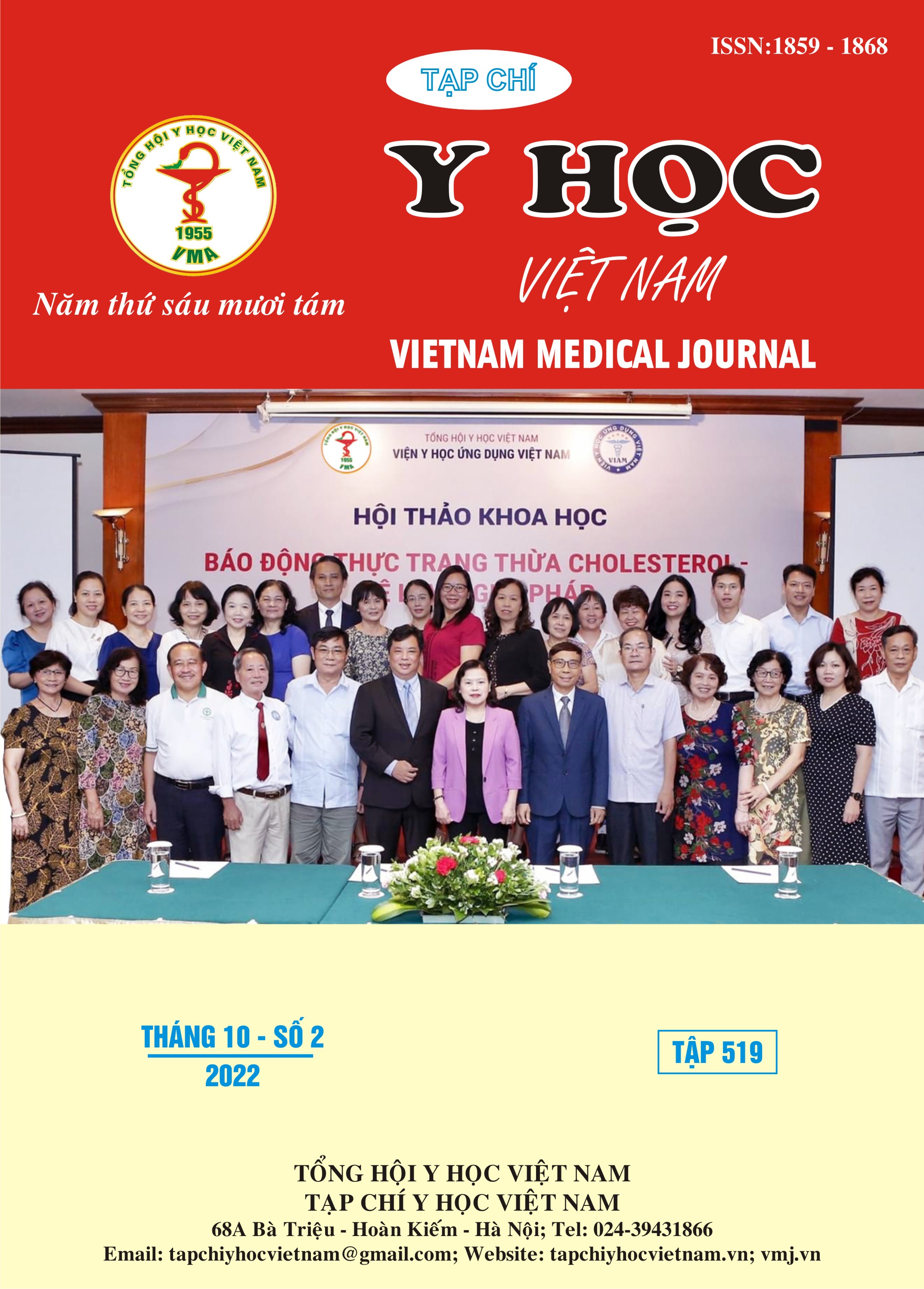INITIAL RESULTS OF TREATMENT OF HIGH-GRADE GLIOMA AT VIETNAM NATIONAL CANCER HOSPITAL
Main Article Content
Abstract
Objectives: To initially evaluate the results of treatment for high-grade glioma. Subjects and methods: A descriptive, prospective study on 52 high-grade glioma patients with indications for surgery, chemotherapy and radiotherapy at K Hospital, Tan Trieu campus, from January 1, 2019 to December 12. 2020. Results: Patients were predominantly male (61.5%) with a mean age of 45.2 years. Most patients had surgery to remove the maximum possible tumor (remove all and most of the tumor), accounting for 96.2%. Six months after surgery, the most commonly reported clinical symptoms were headache (55.8%), hemiplegia (21.2%), epileptic seizures (15.4%), sadness vomiting and vomiting (9.6%); blurred vision, reduced visual acuity (11.5%), the mean Karnofsky score is 67.7; assessment of objective response according to RECIST, 51 out of 52 patients achieved disease control rate (98.1%). Conclusion: Patients with high-grade glioma treated with surgery combined with chemotherapy and radiation gave relatively good results. after 1 and 6 months after surgery, patients had a high rate of disease control in terms of objective response according to RECIST.
Article Details
Keywords
High-grade glioma, early treatment results
References
2. Pang BC, Wan WH, Lee CK, et al. (2007). The role of surgery in high-grade glioma--is surgical resection justified? A review of the current knowledge. Ann Acad Med Singap, 36(5): 358-63.
3. A. R. Padhani, L. Ollivier (2001). The RECIST criteria: implications for diagnostic radiologists. The British journal of radiology, 74(887): 983-986.
4. Trần Kim Tuyến (2022), Nghiên cứu đột biến gen IDH1/2 của u tế bào thần kinh đệm lan tỏa ở người trưởng thành, Luận án tiến sĩ y học, Đại học Y Dược thành phố Hồ Chí Minh.
5. B. K. Rasmussen, S. Hansen, R. J. Laursen, et al. (2017). Epidemiology of glioma: Clinical characteristics, symptoms, and predictors of glioma patients grade I–IV in the the Danish Neuro-Oncology Registry. Journal of Neuro-oncology, 135(3): 571-579.
6. Stupp R, Mason WP, van den Bent MJ, et al (2005). Radiotherapy plus concomitant and adjuvant temozolomide for glioblastoma. N Engl J Med, 352, 987-996.
7. Senft C, Bink A, Franz K, et al (2011). Intraoperative MRI guidance and extent of resection in glioma surgery: a randomised, controlled trial. Lancet Oncol, 12 (11), 997-1003.
8. Antonio O, Kathryn B, Philip G, et al (2014). Phase II Study of Bevacizumab, Temozolomide and Hypofractionated Stereotactic Radiotherapy for Newly Diagnosed Glioblastoma. Clin Cancer Res, 20(19), 5023–5031.


